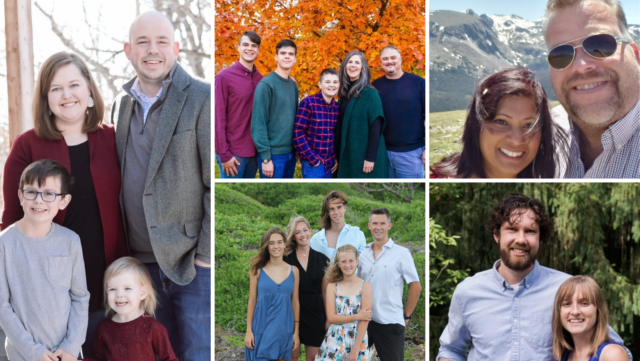For me embracing a kingdom vision means:
I don’t have to hold on to my geographical area
We don’t have to give into the idea that a certain geographical area is “our turf” or is off limits to any other group that wants to reach folks who don’t know Jesus.
What if instead of thinking about the community you live in as “your” area you started to think more about what God is doing and how you’re being invited to participate with him?
There are 86,000 people who live in our community, but in the surrounding area, there are approximately 340,00 people. I think about how many churches we would need to reach all of these people. We currently have 4 Vineyard churches, but we could use another 5 or 6 to even begin to make room. There are different people groups, and cultural and physical barriers to overcome that different types of churches can overcome. For example, we have one Vineyard church about 10 miles away from us, yet they reach a completely different group of people who say they feel uncomfortable coming up to our “big church”, but they feel completely at home in their location.
What if instead of thinking about the community you live in as “your” area you started to think more about what God is doing and how you’re being invited to participate with him? How would that change the way you think about sending people into the next neighborhood, town or city?
I don’t have to hold onto people so tightly.
One of the first things I learned in the Vineyard was how to hold people open-handedly, allowing God to direct their lives. This is so much easier said than done. When you’ve invested in leaders and they become an essential part of your team and then they begin to explore a new opportunity, either a new job or a different kind of ministry, it can be extremely difficult to let them go.
In the past eighteen months we’ve sent out two of our very best couples—either one of them could’ve taken over the Duluth Vineyard when we finally get around to stepping down. We sent one couple about 20 miles away to plant a new church, and a couple hundred people and some great leaders went with them. The other couple has headed across the Atlantic for a great ministry opportunity.
[perfectpullquote align=”right” cite=”” link=”” color=”” class=”” size=””]What if each of our churches became launch pads for some of the best young leaders in our movement?[/perfectpullquote]
And very honestly, it hurts to see them go simply because every we loved working together. But what if each of our churches became launch pads for some of the best young leaders in our movement? What if they knew that we were going to give them everything we have, everything we’ve learned along the way… and what if they knew that we would gladly send them out to spend their lives doing whatever assignment God has given to them. If young leaders know you’re willing to invest in them and send them out with all the blessing you can muster, not only will you have a much more consistent inflow of leaders, you’ll find some great leaders to stick around as well.
Check out this article from the Wall Street Journal: Why the Best Leaders Want Their Superstar Employees to Leave. When a stream of top performers go on to better things, it usually hastens the flow of more top talent into the company.
I can embrace different models of ministry.
It is easy for ministry leaders to become model-centric, mistakenly thinking that there is only one way to accomplish ministry. We can come to believe there is a certain way that we plant churches in the Vineyard and it’s the only way to do it. But really, we should be following the spirit’s leading and be open to experimenting, to exploring new approaches.
For example, in the Vineyard, we are currently starting new Vineyard congregations in several different ways: classic church plants, small and large launch plants, multisite churches, quickly reproducing missional communities, monastic missional communities, and more. What might change as you embraced the many ways God is leading us to plant churches today? What if we looked at around our communities and worked to establish Vineyard churches to meet the needs of those spaces?
Embracing a larger kingdom perspective would lead us to celebrate anytime anyone discovered how great life is with Christ at the center, no matter the model or location of the Vineyard church where it happened. We have the opportunity to develop leaders and send them out to wherever God is calling them to and they’re bringing the power and presence of the resurrected Christ. And that is a beautiful life to live.
Embracing a kingdom vision is one practice that allows you to become a church that plants churches. If you want to learn more about the best practices of multiplying churches, check out this webinar recording.




